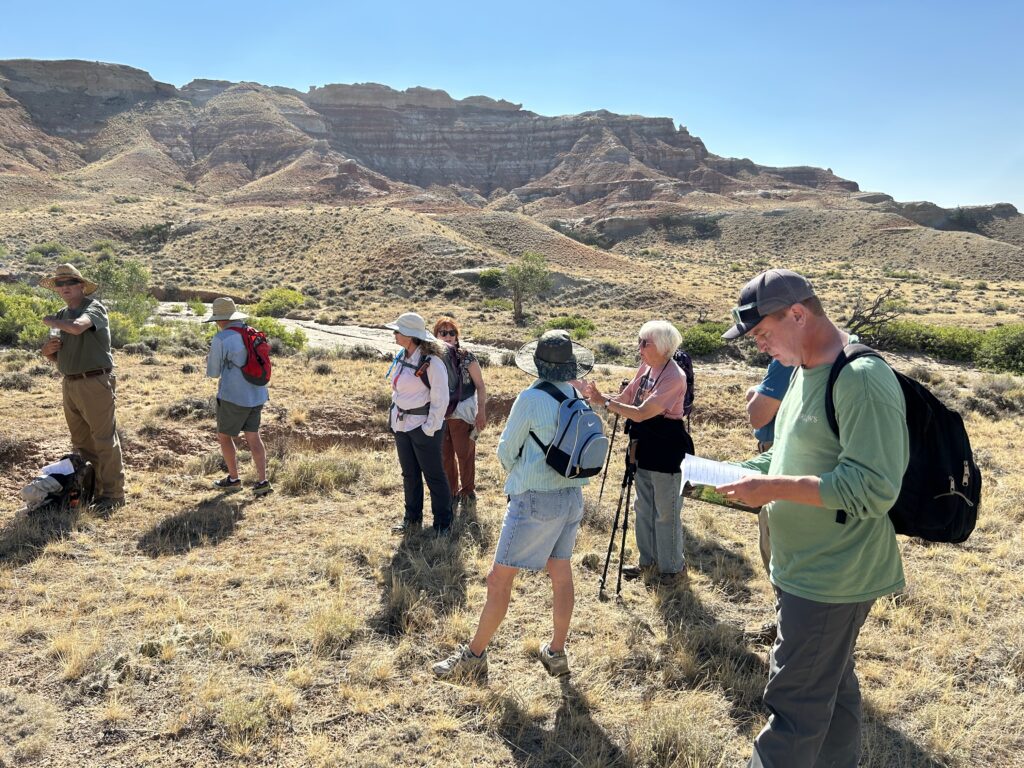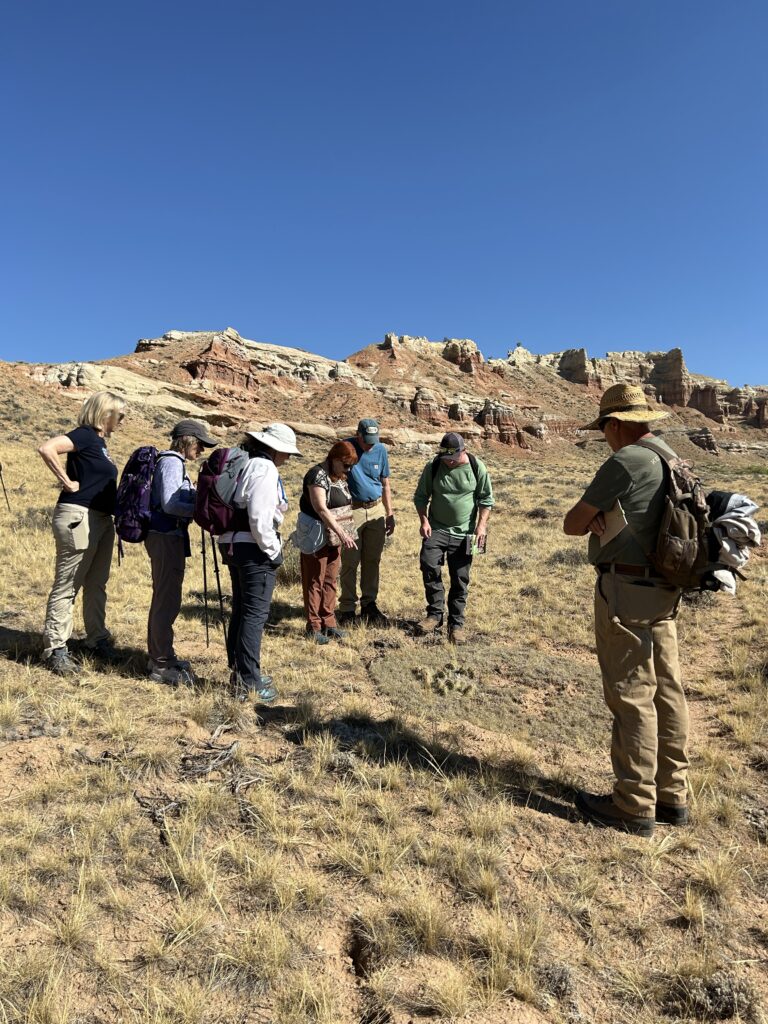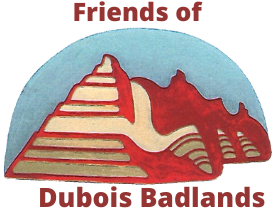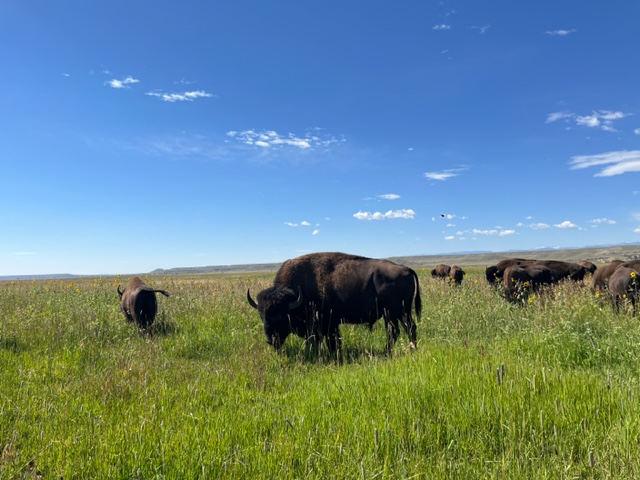Native Plants Encourage Wildlife
The Friends of Dubois Badlands had a very informative talk and hike on August 30, 2024 on the importance of native plants attracting insects who are the basis of supplying food for all wildlife. Drought. Fire. Overgrazing. Oil and gas operations. Even suburbia’s manicured lawns. Many things can negatively impact the ability of a habitat to support diverse life. But happily, there is something that can undo much of the damage: native plants. Wildlife biologist and certified ecological restoration practitioner Dr. Michael Curran recently treated FODB members and guests to a data-rich presentation at Dennison Lodge, followed by a next-morning Badlands hike. The late August events offered an abundance of information on the interdependency of plants, insects, and wildlife. One of many eye-opening statistics: Switching from nonnative to native plants can increase an area’s insect biomass as much as 600-700 times. More insects mean more essential food for birds and, indirectly, other wildlife. Dr. Curran’s knowledge runs deep. The New Jersey native holds both a master’s degree in Rangeland Ecology and Watershed Management and doctorate in Ecology from the University of Wyoming. Past projects have taken him everywhere from Saudi Arabia to study leopard habitats to South Dakota for a deep dive on imperiled butterflies. As founder of Cheyenne-based Abnova Ecological Solutions, his current focus is on sage grouse management and using native plants to restore habitats damaged by well pads, pipelines, and other elements of the oil and gas industry. The benefits of biodiversity aren’t just for former gas fields or wild places like the Badlands, Dr. Curran notes. Homegrown National Park, a grassroots project started by one of his early instructors and mentors, Doug Tallamy, suggests that if Americans replanted just 50 percent of their lawns with native plants, shrubs, and trees, the result would be more wildlife habitat than all the national parks combined. Tallamy’s book, Bringing Nature Home: How You Can Sustain Wildlife with Native Plants, is a user-friendly guide.
“Insects are critical components of terrestrial ecosystems and are often considered ecosystem engineers.”
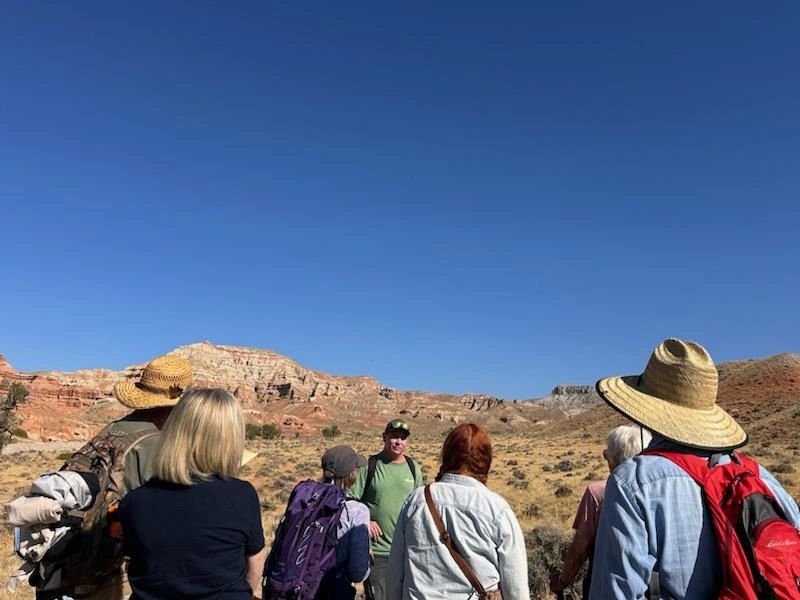
Native Plants Flourish!
“Building Terrestrial Foodwebs Through Native Plant Establishment”
Wyoming’s harsh environment presents special challenges. But the same natives Dr. Curran uses in massive restoration projects like the semi-arid Jonah Field near Pinedale work equally well on a smaller scale.
To foster maximum diversity, he suggests flowering natives over grasses and using locally harvested seed whenever possible. (Denver-based Granite Seed, naturesseed.com, is one source he likes for seed native to our region.) Choose plants with diverse color and bloom time to attract pollinators across seasons. Lewis blue flax, Western yarrow, and Rocky Mountain bee plant, for instance, make a good combo. Penstemons, with their tubular flowers, are a draw for hummingbirds. Other natives Dr. Curran includes in his Wyoming restoration projects include Munro globemallow, white evening primrose, smooth aster, silverleaf lupine, four-wing saltbush, and grasses including Indian ricegrass and bluebunch wheatgrass.
For more on Dr. Curran and Abnova Ecological Solutions, visit abnovaecology.com.
